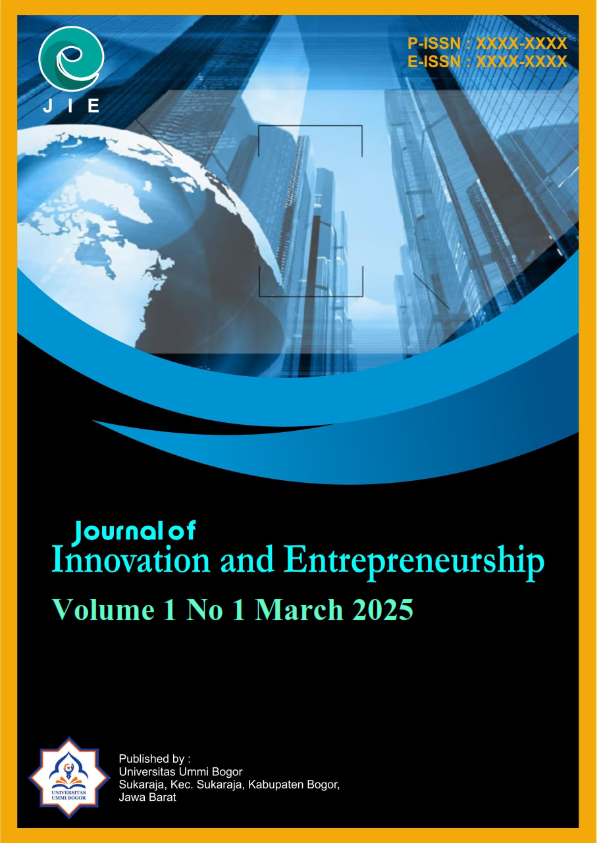Analysis of Slum Area of Market Cerenti Village Cerenti District, Regency Kuantan Singingi
Keywords:
Community Engagement, Environmental Sustainability, Infrastructure Development, Slum AreasAbstract
The rapid population growth in Indonesia has led to significant urban and rural development challenges, particularly in the provision of adequate infrastructure and facilities. One of the key issues arising from this development is the emergence of slum areas due to inadequate urban planning, poor waste management, and insufficient public infrastructure. This study analyzes the slum conditions in Pasar Cerenti Village, Cerenti District, Kuantan Singingi Regency, focusing on the factors contributing to the deterioration of the living environment and the strategies for sustainable improvement. Using a qualitative analysis approach, this research examines social, economic, and environmental aspects to identify the root causes of slum formation. The findings indicate that poor drainage systems, ineffective waste management, and rapid urbanization are the main contributors to environmental degradation in the area. Although government initiatives such as village restoration projects and infrastructure improvements have been implemented, challenges remain due to low public awareness and lack of community participation. To address these issues, this study recommends comprehensive infrastructure improvements, enhanced government-community collaboration, and private sector involvement to support sustainable urban development. Public engagement in environmental planning and management is essential to achieving long-term solutions. The study contributes valuable insights for policymakers in designing strategies to transform slum areas into livable and sustainable communities.
References
Butar Butar, C., & Setiawan, R. P. (2012). Arrangement Slum Environment in Semampir District, Surabaya City Through Community Participation Approach. ResearchGate. Retrieved from https://www.researchgate.net/publication/281837596_Slum Environment Arrangement in Semampir District, Surabaya City Through Community Participation Approach
Crysta, E. A., & Budisusanto, Y. (2017). Identification of Slums Based on RT Level in Keputih Village, Surabaya City. ITS Engineering Journal, 6(2), 2–6. https://doi.org/10.12962/j23373539.v6i2.24173
Dahlan Uar, E. (2016). Slum Management Strategy. 8, 127–144.
Fadjarani, S., & As'ari, R. (2018). Environmentally Based Slum Settlement Arrangement. Journal of Geography, 15(1), 56–67. Retrieved from https://journal.unnes.ac.id/nju/index.php/JG/index
Harahap, A. R. (2019). Portrait of Community in Slum Area (Study in Kangkung Village, Bumi Waras District, Bandar Lampung). Sustainability (Switzerland), 11(1), 1–14. Retrieved from http://scioteca.caf.com/bitstream/handle/123456789/1091/RED2017-Eng-8ene.pdf
Joenso, C., & Sari, S. R. (2020). Urban Slums (Case Study of Lampu Satu Settlement).
Julianto, H., & Jumario, N. (2017). The Influence of Road Infrastructure Development on the Arrangement of Coastal Slum Areas in Tarakan City. Potensi: Journal of Civil Engineering, 19(2), 65–74. https://doi.org/10.35313/potensi.v19i2.897
Ministry of Public Works and Public Housing. (2022). Pocket Book of Identification and Assessment of Slum Locations My City Activities. Retrieved from https://ibmpkp.pu.go.id/
Padyansari, R., Rahayu, M. J., & Suminar, L. (2023). Characteristics and Priority Factors Causing Slums in the Girlibanji Settlement Area (Banjaran-Kranji Riverbank), Banyumas Regency. Village-City, 5(2), 100. https://doi.org/10.20961/desa-kota.v5i2.72271.100-111
Pigawati, R. N. B. (2015). Study of the Characteristics of Slum Areas in Urban Villages (Case Study: Gandekan Village, Semarang). Urban and Regional Planning Techniques, 4(2), 267–281.
Pricilia, L. (2021). Identification of Slum Areas and Communities in Aldeia 12 Divino and Aldeia Tahu Laran Suco Caicoli Posto Administrative Vera Cruz Municipality Dili Timor-Leste. 1. Retrieved from https://elibrary.unikom.ac.id/id/eprint/4636/
Pustri, L. D. (2017). Participatory Planning Training in the Development of Meranti Slum Area in Pekanbaru City.
Sakdiah, C., & Rahmawati, D. (2021). Strategy for Handling Slums in the Metro Watershed Area of Malang City Based on the Principles of Sustainable Development Goals (SDGs). ITS Engineering Journal, 9(2). https://doi.org/10.12962/j23373539.v9i2.56280
Saputra, W., Sukmaniar, & Hermansyah, M. H. (2022). Urban Slums: Causes, Impacts and Solutions. Environmental Science Journal (Esjo): Journal of Environmental Science, 1(1), 12–17. https://doi.org/10.31851/esjo.v1i1.10929
Sari, A. R. S., & Ridlo, M. A. (2022). Literature Study: Identification of Factors Causing the Occurrence of Slums in Urban Areas. Journal of Spatial Studies, 1(2), 160. https://doi.org/10.30659/jkr.v1i2.20022
Setiadi, A. (2017). Infrastructure Handling Patterns in Slum Areas (Case Study of Winongo Riverbank Area). National Seminar-1 BMPTTSSI - KoNTekS 5, 1.
Sitorus, H., Astuti, R. S., & Purnaweni, H. (2020). Implementation of the Slum-Free City Program (KOTAKU) in Overcoming Slum Areas in Tanjung Mas Village, Semarang City. Sawala: Journal of Public Administration, 8(1), 74–94. https://doi.org/10.30656/sawala.v8i1.1617
Syam, M. (2017). Identification of Slum Areas and Handling Strategies in Settlements in Rangas Village, Banggae District, Majene Regency. Retrieved from http://repositori.uin-alauddin.ac.id/7141/1/Muhajir%20Syam_opt.pdf
Wijaya, D. W. (2016). Planning for Handling Slum Areas (Study on Determining Priority Areas for Improving Infrastructure Quality in Slum Areas in Malang City). Scientific Journal of Public Administration, 2(1), 1–10. https://doi.org/10.21776/ub.jiap.2016.002.01.1
Wimardana, A. S. (2016). Priority Factors Causing Slums in Slum Areas in South Belitung Subdistrict, Banjarmasin City. ITS Engineering Journal, 5(2), 3–8.
Yustika, F. N. (2019). Identification of Factors Causing the Occurrence of Slums in Kalirasi Village, Mulyorejo District, Surabaya City. 8(2), 189–193.





